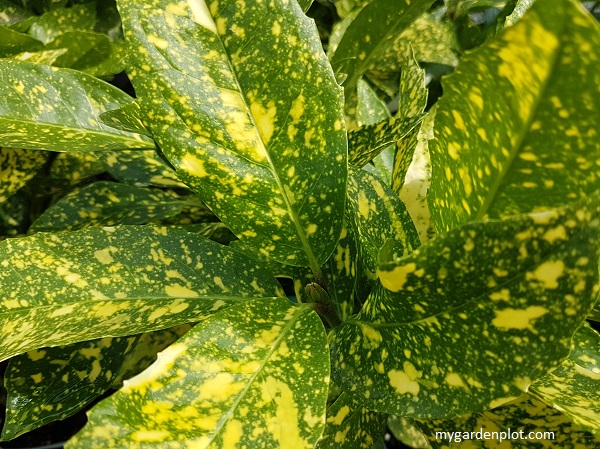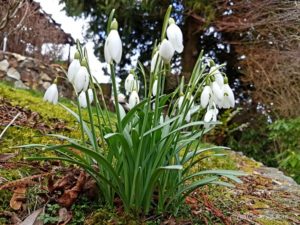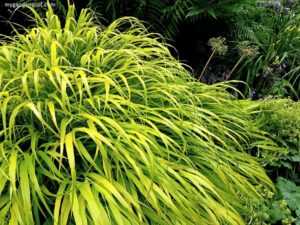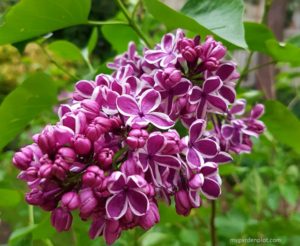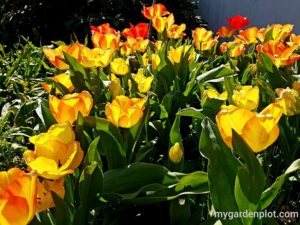About Aucuba japonica (Japanese Aucuba, Spotted Laurel, Japanese Laurel, Gold-Dust Plant)
Aucuba japonica is a dependable evergreen shrub with attractive glossy green foliage dotted with golden-yellow markings. It is also referred to as Japanese aucuba or spotted laurel – and sometimes referred to by its common misspelling, ‘acuba’. Native to Japan, the aucuba, as with many other popular Japanese plants, have a prominent but quiet presence in Pacific Northwest gardens. The variegated leaf reminds me of the tropical Codiaeum croton shrub common in warmer regions. These tips on how to grow and prune aucuba will guide in keeping your shrub healthy and looking great in your garden.
The aucuba is highly adaptable for either a sunny location or shady site, even in deep shade garden conditions, including coastal weather exposure or challenging dry, shaded areas. Perfect for sprucing up a dark corner or an all-green landscape. The aucuba shrub is low maintenance, cold-hardy and easy to care for. It grows at a moderate rate to about 1.5 meters (5 feet). Often used for hedging, but great all season performer as a specimen plant. The variegated cultivars with striking yellow leaves and green margins can look great planted in an outside planter at the entrance of a home.
Female And Male Aucuba japonica (Spotted Laurel) Shrubs, And Toxic Berries
As with Skimmia japonica, both female and male aucuba shrubs are needed to be planted close to each other to produce the red berries. The small flowers come out in spring – though they are relatively insignificant. The autumn berries are produced by the female plant. The male plant is used as a pollinizer. The aucuba berries can sometimes last through the winter and into spring. While attractive, these berries are not edible and are toxic. They are considered poisonous causing nausea and vomiting. Keep children and pets safe. And the birds and deer have no interest in eating them.
Many gardeners are not overly concerned whether their aucuba produce berries as aucuba shrubs are generally favoured for their attractive all-season foliage. If you wish to have the vivid red berries in autumn, make sure to plant a male plant close to the female shrubs. When purchasing your aucuba plant at the garden store, check the plant tag for whether it is a female or male shrub.
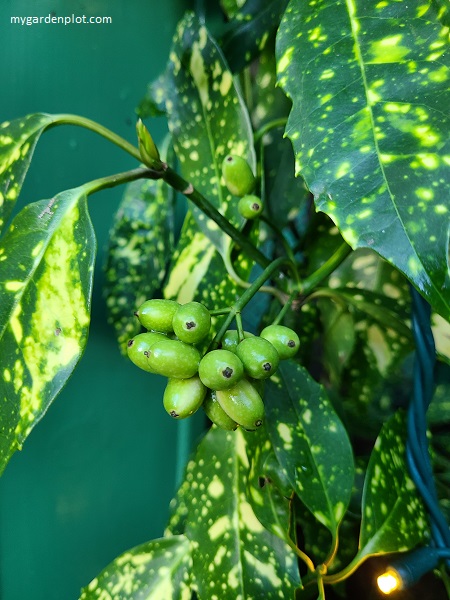
Aucuba (Spotted Laurel) At A Glance
Type: Evergreen Shrub
Location: (Adaptable) Part Shade / Full Sun
Seasonal Interest: Year-round foliage, Autumn/Winter berries, Spring flowers
When To Prune: If Required, Spring (after risk of frost has passed)
Size: Varies 1 – 2.4 metres (3 – 8 feet) tall and equal spread
Plant Hardiness Zone: 6, 7, 8, 9, 10
Where To Plant And How To Grow Aucuba (Spotted Laurel)
The aucuba or spotted laurel is adaptable to different soil conditions and locations, but it does not do well in soggy soil. Aucubas thrive in moist, rich organic and well-drained soil.
Though it is fairly drought resistant once established, it needs regular watering the first year, and especially during hot summer months when planted in full sun location. It is recommended as an evergreen shrub for its green/yellow variegated foliage for brightening a shade garden or in a woodland setting, but most varieties need to receive at least three hours of sunlight to encourage good leaf colour.
Aucubas benefit from an annual application in early spring of rich organic topsoil or slow-release general purpose fertilizer mixed into some mulch.
Pruning Aucuba japonica (Japanese Aucuba, Spotted Laurel)
Generally, aucubas have a naturally rounded shape, though sometimes can develop bare and straggly stems. An annual light prune helps keep it in shape. After winter, check and remove any frost-damaged or dead stems. Aucuba is not fast-growing and can handle a hard prune if necessary to restore its form.
Young plants should be pruned to one-third to encourage a bushy habit from the get-go.
Like pruning Skimmia japonica, most pruning should be done in spring after the last frost of the season has passed and the berries have finished.
If restoring a mature plant’s shape, prune half of the main stems down to 20-25 cm (8 – 10 inches) from the soil level. Then in the second year, do the remaining main stems. Alternatively, aucuba shrubs can handle a hard prune removing all the stems at the same time. If this is done, ensure you feed with a slow-release nitrogen-rich fertilizer and water regularly.
RELATED TOPIC: Buyer’s Guide On How To Choose Hand Pruners (Secateurs)
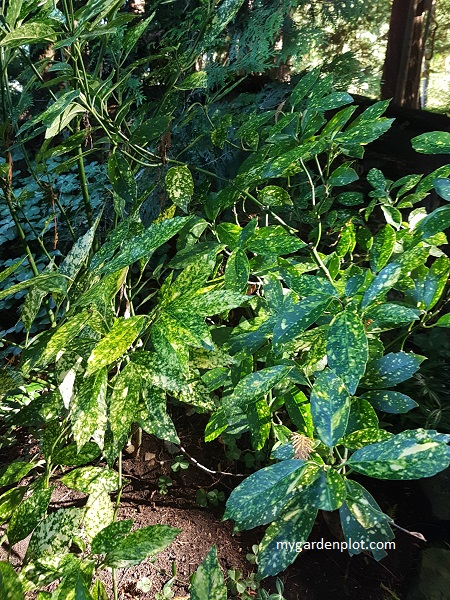
Pests And Diseases That Affect Aucuba japonica (Japanese Aucuba, Spotted Laurel)
Aucuba shrubs are generally trouble-free, though it can be affected by blight, root rot or leaf spot. It is rabbit and deer resistant.

